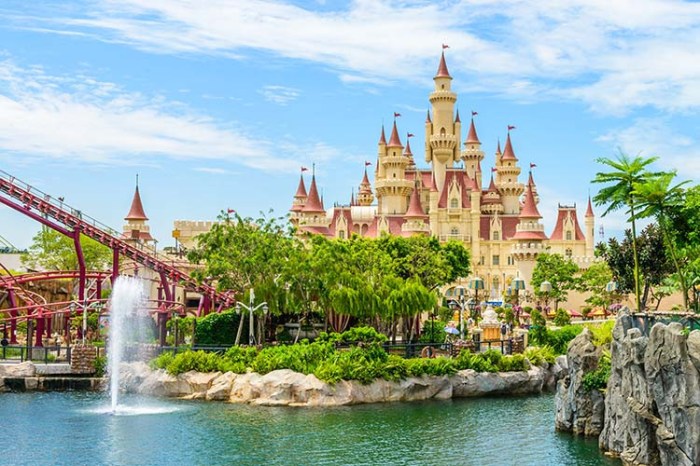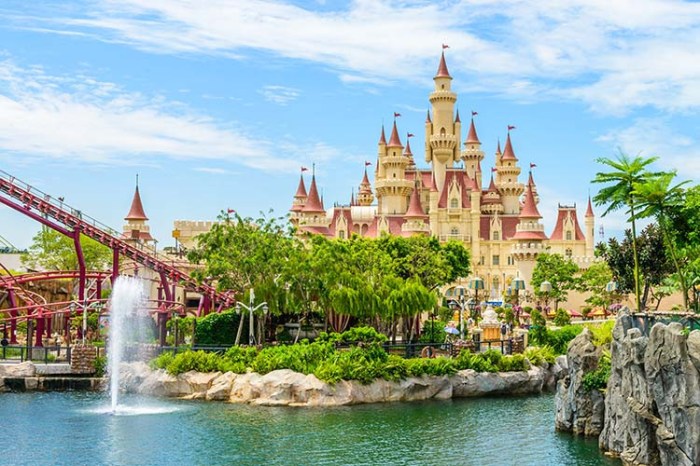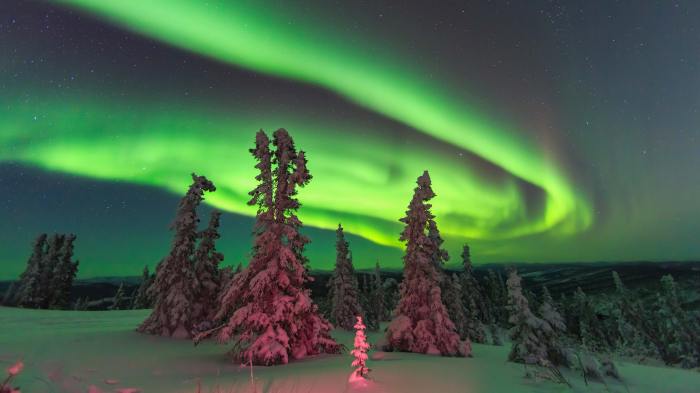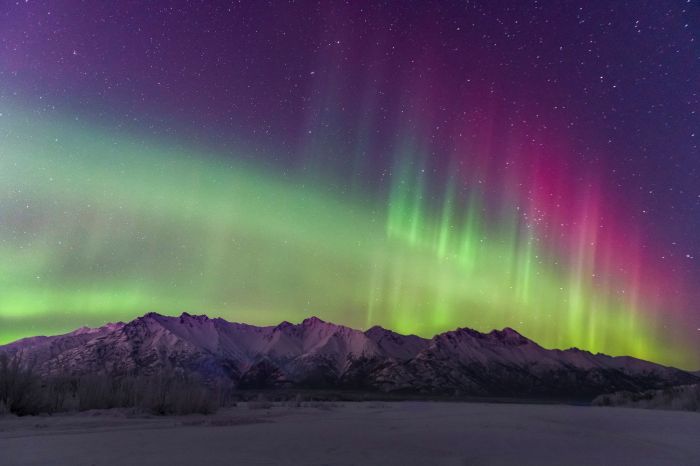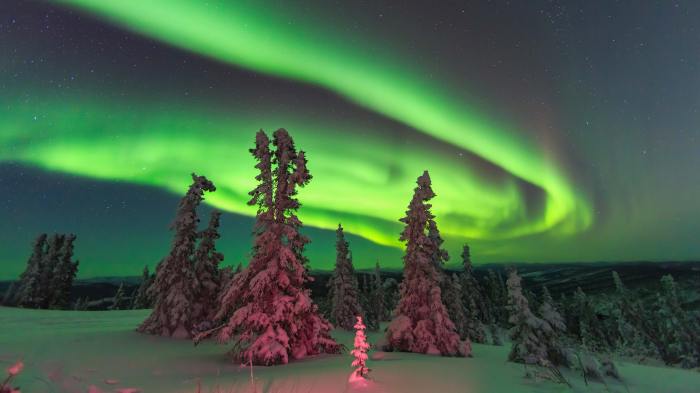Visa requirements for Namibia can seem daunting, but this comprehensive guide simplifies the process. From understanding the different visa types available – tourist, business, student, and work – to navigating the application procedures and required documents, we’ll break down everything you need to know to plan your trip smoothly. We’ll also discuss crucial aspects like processing times, fees, extensions, and important entry regulations.
This detailed exploration covers all the necessary information for a successful visa application. We’ll present the information in a clear, organized format using tables and lists, ensuring a straightforward and easy-to-understand approach. Whether you’re a seasoned traveler or a first-time visitor, this guide is your essential resource for obtaining the correct visa for your trip to Namibia.
Visa Types for Namibia
Namibia, a stunning African destination, welcomes visitors from around the globe. Understanding the various visa types available is crucial for a smooth and legal travel experience. This guide will walk you through the different visa categories, their specific requirements, and associated costs.Navigating the visa process can be simplified with a clear understanding of the types of visas Namibia offers.
This allows travellers to plan their trip efficiently and avoid potential delays or complications at the border.
Visa Categories
Different visa categories cater to varying travel purposes. A comprehensive understanding of these categories helps in choosing the appropriate visa for your needs.
- Tourist Visa: This visa is designed for individuals seeking to explore Namibia’s diverse landscapes and attractions. It allows for short-term stays for tourism purposes, such as visiting national parks, game reserves, or experiencing the country’s vibrant culture. A tourist visa typically requires proof of sufficient funds to cover your stay and a return ticket.
- Business Visa: This visa is granted to individuals travelling to Namibia for business-related activities. This might include attending conferences, conducting negotiations, or establishing business relationships. Supporting documents demonstrating the business purpose are essential for processing this visa type.
- Student Visa: This visa type is specifically for students seeking to study in Namibian educational institutions. Students must provide proof of enrolment at a recognised Namibian university or college, along with financial documents demonstrating sufficient funds to cover their studies and living expenses.
- Work Visa: This visa is intended for individuals seeking employment in Namibia. It requires a formal job offer from a Namibian employer, demonstrating the applicant’s suitability for the position and adherence to Namibian labour laws.
Visa Requirements
The specific documents required for each visa category vary. Thorough preparation is key to ensuring a smooth application process.
- Passport: A valid passport with at least six months of validity beyond your intended stay is a fundamental requirement for all visa types.
- Application Form: Correctly completed visa application forms are necessary for all types of visas. Incomplete or inaccurate forms may lead to delays or rejection.
- Proof of Purpose: Depending on the visa type, you’ll need to provide documentation that confirms the reason for your visit. This might include flight tickets, accommodation bookings, or invitations for business meetings.
- Financial Resources: Evidence of sufficient funds to cover your stay in Namibia is often required. Bank statements, sponsorship letters, or other financial documents can demonstrate your ability to support yourself during your visit.
Processing Time and Fees
The processing time and fees associated with each visa category can differ significantly. This information is crucial for planning your travel timeline and budgeting accordingly.
| Visa Type | Purpose | Required Documents | Processing Time (approx.) | Fees (approx.) |
|---|---|---|---|---|
| Tourist | Tourism | Passport, Application Form, Proof of Funds, Return Ticket | 5-10 business days | USD 50-100 |
| Business | Business Activities | Passport, Application Form, Business Letter, Invitation Letter, Proof of Funds | 7-14 business days | USD 75-150 |
| Student | Study | Passport, Application Form, Letter of Acceptance, Proof of Funds, Health Insurance | 10-20 business days | USD 100-200 |
| Work | Employment | Passport, Application Form, Job Offer Letter, Proof of Qualifications, Proof of Funds | 15-25 business days | USD 150-250 |
Note: Processing times and fees are approximate and may vary depending on individual circumstances and the specific application. It is always recommended to consult the official Namibian embassy or consulate website for the most up-to-date information.
Eligibility Criteria
Navigating the world of visa requirements can feel like deciphering a complex code. Understanding the eligibility criteria for a Namibian visa is crucial for a smooth application process. This section delves into the general requirements, specific document needs, and criteria for various visa types, empowering you with the knowledge needed to successfully apply.Eligibility for a Namibian visa hinges on several factors.
These factors are not always uniform across visa types. Your nationality, purpose of travel, duration of stay, and financial resources are all considered. Beyond these general requirements, specific criteria exist for different visa categories.
General Eligibility Requirements
The general eligibility criteria for a Namibian visa encompass several crucial aspects. Applicants must demonstrate a genuine intent to visit Namibia for a specific purpose, supported by credible evidence. This includes a clear travel itinerary and confirmed accommodation arrangements. Furthermore, applicants must demonstrate adequate financial resources to cover their stay, including proof of sufficient funds for daily expenses and return travel.
A valid passport, with a minimum validity period beyond the intended stay, is mandatory. Finally, applicants must demonstrate no criminal record or health concerns that might pose a risk to public health.
Required Documents
A comprehensive list of documents is typically needed for a visa application. This list is not exhaustive but encompasses the most commonly required items. The specific documents may vary based on the visa type and individual circumstances.
- Passport: A valid passport with at least six months of validity remaining beyond the intended stay. A copy of the passport information page is often requested.
- Visa Application Form: Properly completed and signed application form. Accuracy is essential for a smooth process.
- Proof of Purpose of Visit: This might include a letter of invitation, reservation confirmations, or a detailed itinerary outlining the intended activities.
- Proof of Financial Resources: Evidence of sufficient funds to cover travel and living expenses during the stay. Bank statements or sponsorship letters may be necessary.
- Proof of Accommodation: Hotel bookings, rental agreements, or letters of invitation from a host.
Visa Type-Specific Criteria
Different visa types have unique eligibility criteria. These factors determine the specific requirements for each application.
- Tourist Visa: Applicants must demonstrate a clear intention to visit Namibia for tourism purposes. This is usually supported by a detailed itinerary outlining planned activities, along with proof of sufficient funds.
- Business Visa: Applicants must provide evidence of a legitimate business activity in Namibia, such as letters from a business partner or client, confirming the nature of the business engagement.
- Work Visa: Applicants need a job offer from a Namibian employer, demonstrating the nature of the employment, along with supporting documents such as a contract or employment letter. Evidence of qualifications and work experience is often needed.
Table of Documents for Various Visa Categories
This table provides a concise overview of the documents typically required for different visa types. Note that this is not an exhaustive list, and specific requirements may vary.
| Visa Category | Required Documents |
|---|---|
| Tourist Visa | Passport, Application Form, Proof of Accommodation, Proof of Finances, Travel Itinerary |
| Business Visa | Passport, Application Form, Proof of Business Activity, Letter of Invitation, Proof of Finances |
| Work Visa | Passport, Application Form, Employment Contract, Proof of Qualifications, Proof of Finances, Letter of Invitation from Employer |
| Student Visa | Passport, Application Form, Letter of Acceptance from a Namibian Educational Institution, Proof of Finances, Medical Certificate |
Application Procedures
Navigating the visa application process for Namibia can feel daunting, but with a clear understanding of the steps involved, it becomes much more manageable. This section provides a step-by-step guide, outlining the required documents, online portals, and submission methods. This comprehensive overview ensures a smooth application experience.
Visa Application Portal
The Namibia visa application process largely relies on digital platforms for efficiency and transparency. This approach streamlines the application process, reducing potential delays and facilitating quicker approvals. The primary online portal used for visa applications is the official website of the Namibian Ministry of Immigration. Access to the specific forms and instructions is generally provided on this platform.
Planning a trip to Namibia? Visa requirements can be a bit of a headache, but thankfully, the process isn’t too arduous. While researching the specifics, I stumbled upon a fantastic bandolier crossbody phone case wallet on Amazon, bandolier crossbody phone case wallet amazon , perfect for keeping all my essentials organized. Ultimately, knowing the visa requirements ahead of time will ensure a smooth trip, and avoid any last-minute surprises.
Application Forms
A variety of forms are required for different visa types. The specific forms needed depend on the type of visa you are applying for. These forms typically request personal details, travel plans, and supporting documentation. Accurate completion is crucial, as errors can delay or reject your application.
- Form Completion: Carefully review the application form. Fill in all requested fields accurately, ensuring all information is complete and truthful. Common fields include personal details (name, date of birth, nationality), travel dates, purpose of visit, and contact information. Adhere to the specified formatting guidelines. Avoid using abbreviations unless specifically permitted by the form instructions.
Double-check your entries for errors before submission.
- Supporting Documents: Gather all necessary supporting documents. These documents typically include a valid passport, proof of financial resources, and any other documents specified by the visa type. Ensure all documents are properly formatted and translated if required. Keep copies of all submitted documents for your records. Ensure the documents are in a clear and readable format, free from any blemishes or damage.
- Submission Methods: The preferred submission method is generally online, using the designated portal. The process usually involves uploading the completed form and supporting documents in the specified format. Ensure that all documents meet the required specifications for file size and format. Instructions on the portal will clarify the precise submission method.
- Application Tracking: After submitting your application, you can typically track its status through the online portal. The portal will display the current stage of your application. Regular checks can help monitor progress and address any potential issues promptly.
Application Form Examples
The application forms generally require detailed information about the applicant, their travel plans, and the purpose of their visit. Fields include:
| Field | Description |
|---|---|
| Full Name | Applicant’s full legal name |
| Date of Birth | Applicant’s date of birth |
| Passport Number | Applicant’s passport number |
| Nationality | Applicant’s nationality |
| Travel Dates | Dates of travel to and from Namibia |
| Purpose of Visit | Reason for visiting Namibia |
| Contact Information | Applicant’s contact details |
Form fields should be filled out completely and accurately. Any discrepancies may lead to application rejection.
Required Documents
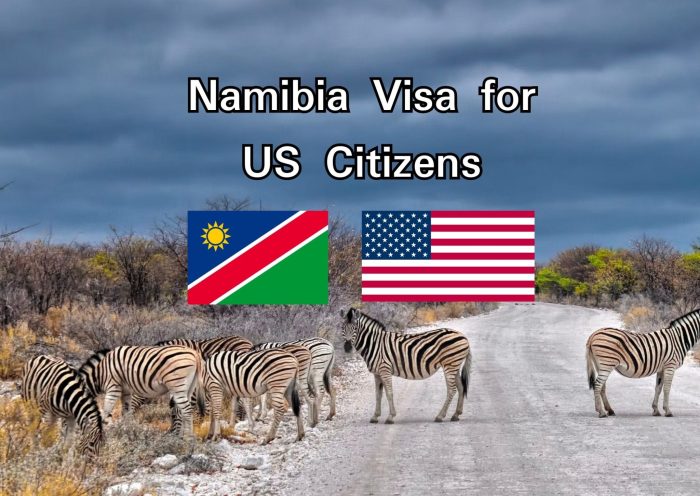
Navigating the world of visa applications can feel like deciphering a complex code. Understanding the specific documents needed for a Namibian visa is crucial for a smooth application process. This section provides a comprehensive overview of commonly required documents, categorized by visa type, ensuring you have all the necessary paperwork.The required documents vary significantly based on the type of visa you’re applying for.
Each document serves a specific purpose, verifying your identity, travel plans, and financial stability. Careful attention to detail and accuracy in providing these documents is vital for a successful application.
Commonly Required Documents
This section Artikels the fundamental documents often needed for various Namibian visa applications. These typically include proof of identity, travel history, financial resources, and supporting documents related to the purpose of your visit.
- Passport: A valid passport with at least six months of validity beyond your intended stay in Namibia. The passport should contain blank visa pages.
- Proof of Accommodation: Booking confirmation or letter of invitation from a host in Namibia outlining the accommodation arrangements. This confirms your intended stay in the country.
- Proof of Financial Resources: Evidence demonstrating sufficient funds to cover your expenses during your stay. This can include bank statements, credit card statements, or sponsorship letters.
- Travel Insurance: Proof of comprehensive travel insurance covering medical emergencies, lost luggage, and other potential issues. The insurance policy must cover the duration of your intended stay.
- Purpose of Visit Documentation: Documents that justify the purpose of your visit, such as conference invitations, business letters, or letters of acceptance to educational institutions.
Documents for Specific Visa Types
The precise documents needed differ based on the specific visa type. Careful review of the requirements for each visa type is essential to ensure your application is complete and accurate.
| Visa Type | Required Documents |
|---|---|
| Tourist Visa | Passport, proof of accommodation, proof of financial resources, round-trip ticket, travel insurance, and supporting documents related to the purpose of your visit. |
| Business Visa | Passport, proof of accommodation, proof of financial resources, business invitation letter, company registration documents, and supporting documents to demonstrate the nature of the business. |
| Student Visa | Passport, proof of accommodation, proof of financial resources, acceptance letter from the educational institution, and proof of enrollment in a course. |
| Work Visa | Passport, proof of accommodation, proof of financial resources, employment contract or letter of offer, proof of professional qualifications, and relevant supporting documents. |
Format and Specifications
Each document requires specific formatting and specifications. These requirements are designed to ensure the clarity and authenticity of the information.
- Passport: Must be valid for at least six months beyond your intended stay. Ensure all passport pages are legible and undamaged.
- Bank Statements: Original bank statements should be presented or copies with official authentication, showcasing sufficient funds for the duration of the trip. Specify the account type and include the account holder’s name and contact information.
- Travel Insurance: The policy should cover the duration of your stay in Namibia. The insurance details, including policy number and contact information, should be clearly presented.
- Accommodation Bookings: Provide confirmed bookings, ideally including booking reference numbers and contact details of the accommodation provider. The dates of your stay should be clearly indicated.
Processing Time and Fees
Navigating the visa application process for Namibia often involves questions about the time it takes and the associated costs. Understanding these factors can help applicants prepare effectively and manage their expectations. Knowing the typical processing times and fees for different visa categories is crucial for a smooth application journey.
Visa Processing Times
The time taken to process a Namibian visa application can vary depending on several factors. A complete and accurate application, submitted via the correct channels, often results in a faster turnaround time. Applications that are incomplete or have errors may experience delays. The submission method also plays a role. Applying online generally has a quicker turnaround time compared to submitting the application through a physical post.
Visa Application Fees
Namibia charges fees for various visa types and processing methods. These fees are set by the government and are subject to change. It is crucial to check the official Namibian government website for the most up-to-date information on fees. Fees are generally higher for expedited processing.
Processing Time and Fee Summary
| Visa Category | Processing Time (Typical) | Application Fee (USD) |
|---|---|---|
| Tourist Visa | 7-14 business days | 50 |
| Business Visa | 10-21 business days | 75 |
| Work Visa | 15-30 business days | 100 |
| Study Visa | 10-25 business days | 80 |
| Transit Visa | 3-7 business days | 30 |
Note: Processing times are estimates and can vary. The actual time taken can depend on factors like the completeness of the application, submission method, and current workload at the Namibian embassy/consulate. Applicants should always consult the official government website for the most accurate and up-to-date information.
Visa Extensions and Renewals
Extending or renewing your Namibian visa allows you to stay in the country beyond the initial validity period. Understanding the process is crucial for a smooth stay and avoiding potential issues. This section details the procedure, required documents, and reasons for extensions, helping you navigate this aspect of your Namibian visit.
Eligibility Criteria for Visa Extensions
Visa extensions are granted based on specific circumstances and conditions. These conditions often involve demonstrating continued compliance with Namibian immigration laws and regulations. Eligibility typically hinges on maintaining a valid reason for remaining in the country, such as continuing employment or academic pursuits, or undergoing medical treatment.
Required Documents for Visa Extensions
The precise documentation needed for a visa extension can vary depending on the specific circumstances. However, common documents generally include the original visa application, proof of continued residency, financial stability, and a letter outlining the reasons for the extension. Specific requirements can be found on the official Namibian immigration website.
Visa Extension Application Procedures
The visa extension process usually involves submitting an application to the relevant Namibian immigration authorities. The application should be completed accurately, including all necessary information and supporting documents. The procedures for visa extensions are typically well-defined and documented, providing a clear pathway for applicants to follow.
Steps for Visa Extensions
- Review the Visa Extension Guidelines: Carefully review the official Namibian immigration website for the most up-to-date information on procedures, required documents, and application forms.
- Gather Required Documents: Collect all necessary documents, including your original visa, proof of financial resources, and any supporting documentation required for the specific reason for the extension.
- Complete the Application Form: Accurately complete the application form, providing all requested information. Ensure all details are accurate and consistent with other submitted documents.
- Submit the Application: Submit the completed application form, supporting documents, and any required fees to the designated Namibian immigration office or embassy.
- Monitor the Application Status: Regularly check the status of your application through the official channels. Keep records of your application submission and any communication with the immigration authorities.
- Receive Notification: Once the application is processed, you will receive notification regarding the decision. This notification may grant the visa extension or request additional information.
Reasons for Visa Extensions
Visa extensions are often granted for various reasons, typically related to continued lawful activity within the country. Examples include students seeking to continue their studies, individuals seeking employment, or travelers who need additional time for medical treatment. The specific reasons and conditions for extensions will be Artikeld in the official immigration guidelines.
Namibia’s visa requirements can be a bit tricky, but thankfully, resources like the ultimate USA travelist Griffith Observatory offer helpful insights into navigating travel documentation. Knowing your visa needs is crucial before booking your trip, and the right information can make a world of difference. This all ties back to the importance of thoroughly researching visa requirements for Namibia before you go.
Conditions for Visa Extensions
Various conditions must be met for a visa extension to be granted. These typically include maintaining a valid reason for remaining in the country, adhering to immigration regulations, and providing the necessary documentation to support the requested extension.
Contact Information and Support

Navigating visa requirements can be tricky, especially when dealing with foreign countries. Knowing the right channels for support and contact information is crucial for a smooth application process. This section provides detailed information on how to reach out to Namibian diplomatic missions for assistance with your visa inquiries.
Contacting Namibian Embassies and Consulates
Obtaining the correct contact information for Namibian embassies and consulates is vital for timely and effective communication. This ensures your inquiries are addressed promptly and accurately. Finding the right contact method is key to getting the information you need to successfully apply for a Namibian visa.
Support Channels for Visa-Related Inquiries
Several support channels are available for visa-related inquiries. These channels cater to different communication preferences and ensure that you can obtain the necessary information regardless of your preferred method.
Planning a trip to Namibia? Visa requirements can be a bit of a headache, but thankfully, it’s not as complicated as choosing the perfect cooler for your safari adventures. You’ll need to check the specifics, but generally, citizens of many countries can enter Namibia visa-free for tourism. If you’re looking for the ultimate portable cooling solution for your trip, I highly recommend checking out the top-rated best coolers with wheels available online.
Once you’ve got that sorted, you can focus on the more exciting aspects of your Namibian trip, like the amazing wildlife and stunning landscapes. Visa requirements still need to be considered, though!
Communication Methods for Obtaining Support
You can contact Namibian diplomatic missions through various communication channels. These include email, phone calls, and in-person visits. Choose the method that best suits your needs and preferences for obtaining the necessary information and support.
Contact Information Table
This table provides contact information for Namibian diplomatic missions worldwide. It lists the embassy/consulate, address, phone number, email address, and website.
| Embassy/Consulate | Address | Phone Number | Email Address | Website |
|---|---|---|---|---|
| Embassy of Namibia in Washington, D.C. | [Address] | [Phone Number] | [Email Address] | [Website] |
| Consulate General of Namibia in Johannesburg, South Africa | [Address] | [Phone Number] | [Email Address] | [Website] |
| Consulate of Namibia in [City, Country] | [Address] | [Phone Number] | [Email Address] | [Website] |
| … | … | … | … | … |
Note: Please replace the bracketed placeholders with the actual contact details for each Namibian diplomatic mission.
Travel Insurance: Visa Requirements For Namibia
Protecting yourself against unforeseen circumstances is crucial when traveling, especially to a new country like Namibia. Travel insurance is not just a nice-to-have but a vital component of a smooth and worry-free trip. It provides financial security and peace of mind, ensuring you’re covered in case of medical emergencies, lost luggage, trip cancellations, or other potential issues.Comprehensive travel insurance is often a requirement for obtaining a Namibian visa.
The insurance needs to cover specific aspects of your trip, ensuring you are financially protected throughout your stay. This coverage goes beyond just medical emergencies, encompassing a wide range of potential travel mishaps.
Importance of Travel Insurance for Visa Applications
Travel insurance plays a critical role in visa applications, demonstrating your preparedness for potential issues and your commitment to responsible travel. It assures the authorities that you have financial backing in case of unforeseen events during your stay. This is particularly important for Namibia, as it shows your understanding of the potential risks and your willingness to mitigate them through appropriate insurance coverage.
Recommended Insurance Providers for Travel to Namibia
Many reputable travel insurance companies offer suitable coverage for Namibia. Choosing a provider with a strong track record in international travel is essential. Factors to consider include the provider’s financial stability, coverage options, and customer service reputation. Several well-established companies have specific packages designed for international travel, providing tailored coverage to suit various needs and budgets. In addition to the standard coverage, some insurance providers offer add-ons for specific activities like adventure travel or wildlife viewing, ensuring you are adequately protected in all scenarios.
Insurance Coverage Requirements for Namibian Visa Applications
Specific coverage requirements may vary depending on the type of visa and the duration of your stay. However, a standard requirement often involves medical expenses, emergency evacuation, and trip cancellation/interruption coverage. The minimum coverage amount and the specific inclusions will be clearly Artikeld by the Namibian embassy or consulate. Understanding these requirements beforehand is vital to ensure your application is compliant.
The insurance policy should be clearly Artikeld in terms of its validity, the amount of coverage, and the duration of the policy.
Benefits and Coverage Provided by Different Travel Insurance Providers
Different insurance providers offer various levels of coverage. Some focus on comprehensive protection, covering a wide range of events. Others might emphasize specific areas like medical emergencies or trip cancellations. A basic policy may only cover medical expenses, while a more extensive policy might include trip interruption, lost luggage, and personal liability. Consider the specific risks associated with your trip and choose a policy that addresses those risks.
Comparing the benefits and coverage of different providers can help you find the best option to meet your needs and budget.
Sample Insurance Coverage Highlights
Insurance policies typically cover medical expenses, including hospitalizations and emergency medical treatment. It usually covers repatriation or emergency evacuation if necessary. Policies often include trip cancellation or interruption coverage if your travel plans are disrupted due to unforeseen circumstances. Lost luggage or personal belongings are often included in the coverage. The level of coverage for these items might vary across providers.
Understanding the specifics of each provider’s coverage will help you choose the best option for your trip.
Entry Restrictions and Regulations
Namibia, a stunningly beautiful country in Southern Africa, welcomes visitors from around the world. However, certain regulations and restrictions apply to ensure the smooth operation of its borders and the health of its citizens. Understanding these requirements is crucial for a seamless travel experience.Entry into Namibia is generally straightforward for many nationalities, but certain health and documentation requirements are in place.
This section will delve into these regulations, including visa-free periods, health certificates, and vaccinations.
Health Requirements for Entry
Understanding the health requirements is vital for a smooth entry process. Namibia prioritizes the health and well-being of its residents, and visitors are expected to adhere to these guidelines.Namibia mandates specific health measures for visitors. These requirements are in place to prevent the introduction and spread of communicable diseases. It’s essential to ensure compliance to avoid any potential delays or issues at the border.
- Mandatory Vaccinations: Certain vaccinations, such as Yellow Fever, are mandatory for visitors from regions where the disease is prevalent. The exact requirements are based on the visitor’s origin and are available on the official Namibian Ministry of Health website. Failure to provide proof of required vaccinations can lead to denial of entry.
- Health Certificates: Visitors may be required to present a valid health certificate, depending on their origin and the specific disease situation. These certificates typically confirm that the individual is free from any communicable diseases and are usually issued by a recognized medical authority in the country of origin.
Visa-Free Periods by Nationality
Namibia grants visa-free entry to citizens of numerous countries for specific periods. This policy is designed to facilitate travel and tourism while maintaining the country’s health and security.The duration of visa-free entry varies significantly depending on the nationality of the visitor. It’s advisable to consult the official Namibian immigration website or embassy for the most up-to-date information, as these regulations can change.
| Nationality | Visa-Free Period (Days) |
|---|---|
| United States Citizens | 90 |
| European Union Citizens | 90 |
| South African Citizens | 90 (without specific entry requirements) |
| Other Nationalities | Check the Namibian Immigration website |
Note: This table is not exhaustive and should be considered a sample. It is imperative to verify the most recent visa requirements and visa-free periods for your specific nationality on the official Namibian government websites.
Entry Restrictions and Regulations, Visa requirements for namibia
Beyond health requirements, there may be additional entry restrictions. These regulations are implemented to maintain border security and ensure compliance with immigration laws.Regulations regarding entry into Namibia can include restrictions on the duration of stay, specific entry points, and restrictions on activities during the visit. It’s crucial to be well-informed about these regulations before traveling.
Closing Summary
In conclusion, obtaining a Namibian visa involves careful consideration of various factors, from the specific visa type to the required documents and processing times. This guide has provided a thorough overview of the process, equipping you with the knowledge to navigate the application procedure with confidence. Remember to thoroughly review the information provided and contact the relevant authorities for the most up-to-date details.
By understanding these intricacies, you can confidently plan your trip to Namibia.







